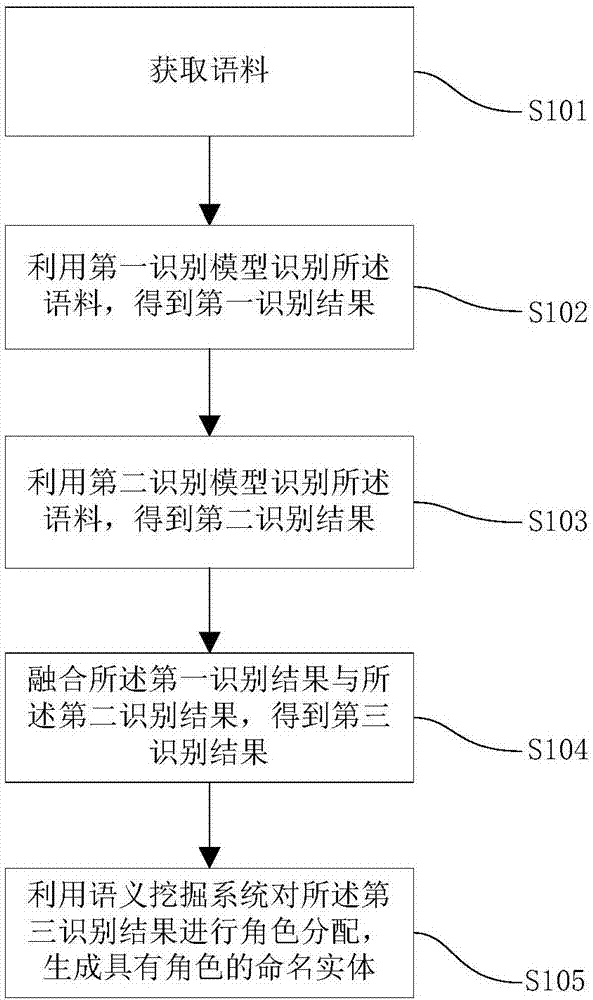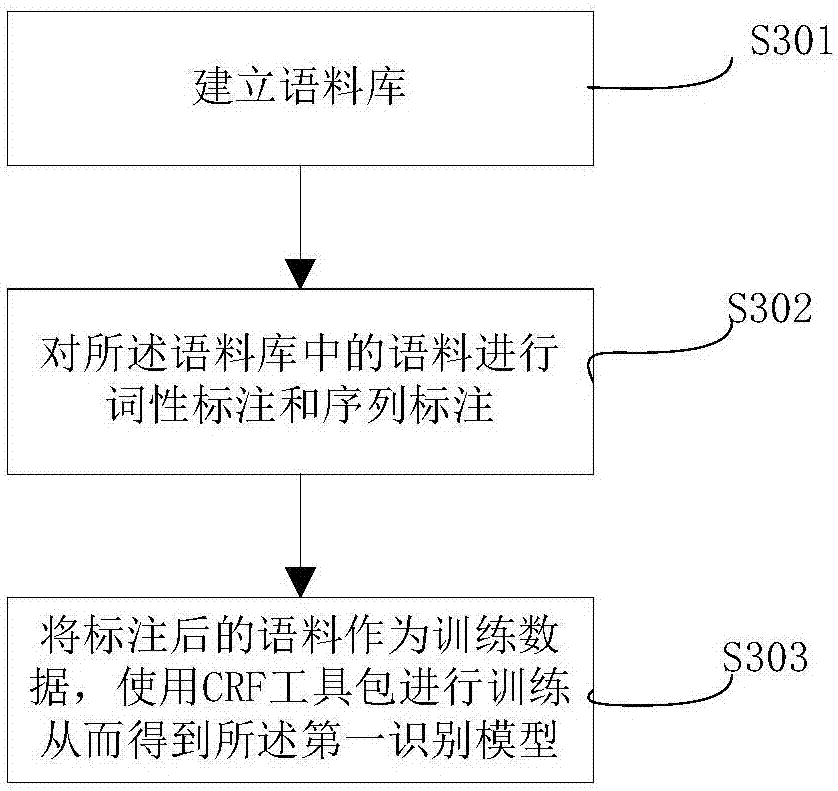Multi-strategy fused method and device for identifying named entity
A named entity recognition and named entity technology, applied in instrumentation, computing, semantic analysis, etc., can solve the problems of inability to assign named entity roles, low named entity recognition accuracy and recall rate, etc.
- Summary
- Abstract
- Description
- Claims
- Application Information
AI Technical Summary
Problems solved by technology
Method used
Image
Examples
experiment example 1
[0177] Influence of mode value on F value in the second recognition of Experimental Example 1
[0178] In the second recognition step used in this experimental example, the preset values are different, and the final named entity recognition results are significantly different. This experimental example investigates the influence of the preset values on the named entity recognition results.
[0179] The preset value is the mode of the at least two recognition models;
[0180] The named entity recognition result is measured by the F value, and the higher the F value, the more reliable the recognition result is, wherein,
[0181] Accuracy (P) = number of named entities recognized correctly / number of named entities recognized by the machine,
[0182] Recall rate (R) = number of correctly identified named entities / number of named entities in the test corpus.
[0183] F value = 2*P*R / (P+R).
[0184] The recognition models used in the second recognition in this experimental ...
experiment example 2
[0193] Experimental example 2 Named entity recognition results when each recognition model is used alone
[0194] This experiment example tests the results of using one recognition model alone for named entity recognition to compare the reliability of the two named entity recognition methods of single recognition model and multi-recognition model fusion.
[0195] The recognition models used in this experimental example are the CRF recognition model used in the primary recognition, the precise word segmentation algorithm used in the second recognition, the word segmentation algorithm with new word discovery function, and the named entity recognition algorithm of structured perceptron. The result is as Figure 6 and shown in Table 2.
[0196] Table 2 Reliability of single recognition model named entity recognition method
[0197]
[0198] exist Figure 6 Among them, line A is the line of recall rate corresponding to each recognition method; line B shows the line of F val...
experiment example 3
[0200] Experimental example 3 Named entity recognition results of each recognition model of the application method
[0201] In this experimental example, the accuracy rate, recall rate and F value of the first recognition result, the second recognition result and the third recognition result were calculated respectively by using the method provided in this application. The results are shown in Table 3 below.
[0202] Table 3 Named entity recognition results of each recognition model of the application method
[0203]
[0204] It can be seen from Table 3 that according to the method provided by the present application, the accuracy, recall and F value of the third recognition result obtained on the basis of the first recognition result and the second recognition result have been greatly improved, that is, , the method provided by this application can cope with new situations such as massive data scale, diversified entity types, and endless new words, and has a high recall ...
PUM
 Login to View More
Login to View More Abstract
Description
Claims
Application Information
 Login to View More
Login to View More - R&D
- Intellectual Property
- Life Sciences
- Materials
- Tech Scout
- Unparalleled Data Quality
- Higher Quality Content
- 60% Fewer Hallucinations
Browse by: Latest US Patents, China's latest patents, Technical Efficacy Thesaurus, Application Domain, Technology Topic, Popular Technical Reports.
© 2025 PatSnap. All rights reserved.Legal|Privacy policy|Modern Slavery Act Transparency Statement|Sitemap|About US| Contact US: help@patsnap.com



